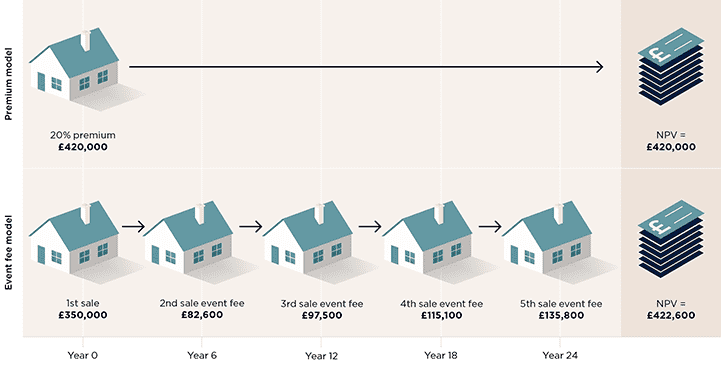event fees
The cost of communal facilities needs to be factored into the price of retirement homes, and transparency is key
.png)
The cost of communal facilities needs to be factored into the price of retirement homes, and transparency is key
With fresh consultation on capping and scrapping ground rents underway, it’s clear that the Government and the public’s view on annual charges for homeowners is not a positive one. Unless the retirement living sector can change the perception of event fees, there is a risk that opinion could turn against them too.
There’s more than one way to compensate developers for providing communal facilities on retirement schemes
Savills Research
One way or another, developers need compensating for providing communal facilities such as restaurants or spas. There are two main ways to do that for a market sale product: set a premium price when you first sell the homes, or take an event fee each time the property changes hands.

Short- and long-term models How event fees work versus an initial upfront cost
Source: Savills Research | Notes: NPV = net present value; Premium model sells at 20% premium on day 1. Event fee model charges 20% event fee on each sale; 20% of event fee reinvested into the scheme; average length of occupancy six years; annual house price inflation 2.8%, discount rate 12.0%
Short-term and long-term models
Which model is more appropriate depends largely on how much involvement the developer has in the scheme once it’s built. For developers who just want to move on to the next site, charging a premium sale price will help them recycle their capital quicker. For developers who intend to hold and operate the site, an ongoing income stream will help fund those communal amenities and facilitate refurbishment and maintenance in the longer term.
The indicative model above shows how either operating model can provide similar value to a developer over the long term. The longer-term model has advantages for residents as well as developers. This income stream allows the operator to maintain and improve the communal facilities. That’s likely to support growth in unit values, while improving the quality of life for the residents.
Whichever model developers decide to use, customers and government are likely to demand greater cost transparency in future. Whether paying a premium on day one or an event fee later on, residents and their families will feel more comfortable if they know exactly what they are paying for.
3 other article(s) in this publication